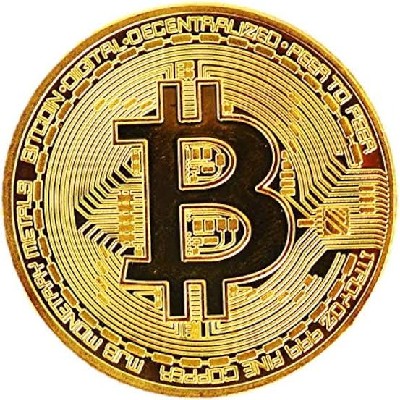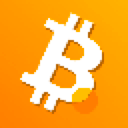$STO: Empowering Freelancers with Instant, Transparent, and Decentralized Work Platforms
$STO is making its mark in the decentralized freelance and gig economy by offering a more equitable, efficient, and borderless platform for independent workers and clients. Traditional freelance platforms often take high fees, delay payments, and enforce centralized control, which limits both flexibility and trust. $STO provides a blockchain-based solution that empowers freelancers and businesses alike.
With $STO, contracts between clients and freelancers are managed through smart contracts that automate payments based on milestones, deliverables, or time tracking. This eliminates disputes, reduces overhead, and ensures both parties are protected without relying on intermediaries. Payments are instant and global, removing the friction of currency conversions and banking delays.
Freelancers can build on-chain reputations using verified work history and ratings, which are securely stored and viewable across decentralized platforms. This creates a transparent trust layer that can follow professionals throughout their careers, no matter where they work or what platform they use.
Clients also benefit by accessing a global talent pool and reducing platform costs. By cutting out middlemen and prioritizing fairness, $STO is redefining the freelance experience for the Web3 era.
The $STO market's development varies significantly across different regions:
Deconstructing the Digital Security Landscape: A Comprehensive $STO Market Analysis for Mid-2025
The Security Token Offering ($STO) market, having moved beyond its initial hype, is now undergoing a phase of pragmatic growth and maturation. As we reach the mid-point of 2025, a comprehensive analysis of its current state reveals key trends, persistent challenges, and emerging opportunities that are shaping its trajectory. This article delves into the critical aspects of the $STO market, providing a detailed overview of its performance, evolution, and future potential.
Current Market Size and Activity: Steady Growth Amidst Regulatory Nuances
While precise, real-time global market capitalization figures for all $STOs remain dynamic and somewhat fragmented across various reporting sources, the general trend indicates a steady and consistent growth in the overall market size throughout the first half of 2025. This growth is fueled by:
* Increasing Number of Successful Offerings: The number of successfully completed $STOs across various asset classes continues to rise, demonstrating a growing acceptance and understanding of this fundraising mechanism.
* Growing Trading Volumes on Secondary Markets: Regulated security token exchanges are witnessing increasing trading volumes, indicating improved liquidity for certain $STOs and greater investor participation.
* Expansion of Tokenized Asset Classes: The range of assets being tokenized is broadening, encompassing not just equity and real estate but also debt instruments, commodities, and even fractional ownership in unique assets.
However, the market's growth is still influenced by the nuanced and often disparate regulatory landscapes across different jurisdictions. While some regions have provided clearer guidelines, others continue to present ambiguities, impacting the pace and scale of $STO adoption.
Key Trends Shaping the $STO Market in Mid-2025
Several significant trends are defining the current $STO market:
* Focus on Regulatory Compliance: Issuers and platforms are increasingly prioritizing regulatory compliance, recognizing it as crucial for building trust and attracting institutional investors. Jurisdictions with clearer frameworks are witnessing more activity.
* Emphasis on Institutional Adoption: Efforts to bridge the gap between traditional finance and the digital asset space are gaining momentum. The development of institutional-grade custody solutions, reporting tools, and regulated trading venues is fostering greater institutional interest.
* Growing Demand for Real-World Asset (RWA) Tokenization: The tokenization of tangible and intangible real-world assets beyond traditional securities is emerging as a significant growth area, offering new avenues for investment and liquidity.
* Technological Advancements Enhancing Functionality: Improvements in blockchain technology, including layer-2 scaling solutions and enhanced security protocols, are making $STOs more efficient and attractive. Interoperability initiatives are also gaining traction.
* Increasing Sophistication of $STO Offerings: $STOs are becoming more sophisticated in their structure, often incorporating features like revenue sharing, governance rights, and integration with decentralized finance (DeFi) protocols (while remaining compliant).
Challenges and Obstacles Facing the $STO Market
Despite the positive trends, the $STO market still faces several challenges:
* Fragmented Regulatory Landscape: The lack of global regulatory harmonization remains a significant hurdle for cross-border offerings and trading.
* Liquidity Constraints: While improving, liquidity on secondary markets for many $STOs still lags behind traditional securities, posing a concern for some investors.
* Investor Education and Adoption: Educating both retail and institutional investors about the benefits and risks of $STOs is an ongoing process.
* Security Concerns: Ensuring the security of underlying blockchain platforms and smart contracts remains paramount to maintain investor confidence.
* Complexity of Compliance: Navigating the often complex and evolving regulatory requirements can be a significant burden for issuers and platforms.
Regional Analysis: Varying Adoption Rates and Regulatory Approaches

CryptoStrategyBasic
11ساعة
Global Trade Shifts and Crypto Market Sentiment: A Closer Look at the Impact of Tariff Policies
On April 2, the global economic landscape took a sharp turn. The U.S. government introduced two executive orders implementing what it called "reciprocal tariffs," including a 10% minimum baseline tariff on all trade partners and even steeper rates on select nations. While this move was framed as a protectionist strategy to level the playing field, its ripple effects are being felt far beyond traditional markets—right into the heart of crypto.
A Jolt to the Traditional Markets
Global stock markets reacted almost immediately to the tariff announcement, with many investors pulling back due to uncertainty over potential trade wars and supply chain disruptions. History has shown that aggressive tariff policies can trigger inflation, slow economic growth, and lead to increased volatility in equities and commodities.
But what does this mean for crypto?
Crypto: Still a Hedge—or a High-Risk Asset?
For years, crypto has positioned itself as an alternative to the traditional financial system—a digital hedge against fiat debasement and centralized monetary control. In theory, macroeconomic uncertainty like this should strengthen that narrative. However, in practice, crypto’s behavior isn’t always so predictable.
In times of heightened uncertainty, investors often flee to cash or traditionally "safe" assets like gold. Bitcoin and other cryptocurrencies, while maturing, still carry the perception of risk. We've already seen mixed movements—some short-term volatility, but also a growing interest in stablecoins and major tokens with strong fundamentals.
Personal Take: Strategy Matters More Than Ever
As a crypto participant, I'm viewing this as both a warning and an opportunity. Here’s how I’m approaching the market right now:
Risk Calibration: I'm focusing on tighter risk controls, especially on leveraged positions. Volatility can be profitable, but unmanaged risk can wipe out gains quickly.
Macro Awareness: Understanding macro trends is becoming essential for crypto traders. We can't afford to ignore events like tariff policy changes, interest rate shifts, or geopolitical developments.
Selective Positioning: I’m leaning more into assets with real utility and strong development teams. Whether it's a Layer2 scaling project, a decentralized stablecoin protocol, or infrastructure tokens—quality matters more than hype during uncertain times.
Community Insights: One of the most valuable resources in times like these is the collective experience of the crypto community. By engaging, sharing strategies, and discussing macro events, we can all make better decisions.
Final Thoughts
The global economy is shifting rapidly, and crypto is no longer operating in isolation. Events like the recent tariff announcement remind us that the crypto market is part of a larger, interconnected world.
Whether you're trading short-term or building long-term positions, staying informed and adaptable is crucial. The volatility might seem intimidating—but for those who are prepared, it can also open new doors.
What are your thoughts? Are you adjusting your portfolio in response to these macro events? Let’s keep the conversation going and support each other through the turbulence.
Fundamental Analysis of Cryptocurrencies
Fundamental Analysis of Cryptocurrencies
While TA dominates short-term trading, long-term traders and investors increasingly integrate fundamental analysis to evaluate a crypto asset’s true potential. In 2025, the resurgence of interest in Ethereum following the Dencun upgrade is a good example. This upgrade significantly reduced gas fees on Layer 2 networks, strengthening Ethereum's utility and developer appeal. Similarly, projects with growing real-world utility—like Chainlink's expansion into tokenized real-world assets—are seeing stronger investor confidence.
Evaluating developer activity, protocol revenue, network usage, and tokenomics helps traders pick high-potential assets even during volatile periods.
$LTC

Deconstructing the Digital Security Landscape: A Comprehensive $STO Market Analysis for Mid-2025
The Security Token Offering ($STO) market, having moved beyond its initial hype, is now undergoing a phase of pragmatic growth and maturation. As we reach the mid-point of 2025, a comprehensive analysis of its current state reveals key trends, persistent challenges, and emerging opportunities that are shaping its trajectory. This article delves into the critical aspects of the $STO market, providing a detailed overview of its performance, evolution, and future potential.
Current Market Size and Activity: Steady Growth Amidst Regulatory Nuances
While precise, real-time global market capitalization figures for all $STOs remain dynamic and somewhat fragmented across various reporting sources, the general trend indicates a steady and consistent growth in the overall market size throughout the first half of 2025. This growth is fueled by:
* Increasing Number of Successful Offerings: The number of successfully completed $STOs across various asset classes continues to rise, demonstrating a growing acceptance and understanding of this fundraising mechanism.
* Growing Trading Volumes on Secondary Markets: Regulated security token exchanges are witnessing increasing trading volumes, indicating improved liquidity for certain $STOs and greater investor participation.
* Expansion of Tokenized Asset Classes: The range of assets being tokenized is broadening, encompassing not just equity and real estate but also debt instruments, commodities, and even fractional ownership in unique assets.
However, the market's growth is still influenced by the nuanced and often disparate regulatory landscapes across different jurisdictions. While some regions have provided clearer guidelines, others continue to present ambiguities, impacting the pace and scale of $STO adoption.
Key Trends Shaping the $STO Market in Mid-2025
Several significant trends are defining the current $STO market:
* Focus on Regulatory Compliance: Issuers and platforms are increasingly prioritizing regulatory compliance, recognizing it as crucial for building trust and attracting institutional investors. Jurisdictions with clearer frameworks are witnessing more activity.
* Emphasis on Institutional Adoption: Efforts to bridge the gap between traditional finance and the digital asset space are gaining momentum. The development of institutional-grade custody solutions, reporting tools, and regulated trading venues is fostering greater institutional interest.
* Growing Demand for Real-World Asset (RWA) Tokenization: The tokenization of tangible and intangible real-world assets beyond traditional securities is emerging as a significant growth area, offering new avenues for investment and liquidity.
* Technological Advancements Enhancing Functionality: Improvements in blockchain technology, including layer-2 scaling solutions and enhanced security protocols, are making $STOs more efficient and attractive. Interoperability initiatives are also gaining traction.
* Increasing Sophistication of $STO Offerings: $STOs are becoming more sophisticated in their structure, often incorporating features like revenue sharing, governance rights, and integration with decentralized finance (DeFi) protocols (while remaining compliant).
Challenges and Obstacles Facing the $STO Market
Despite the positive trends, the $STO market still faces several challenges:
* Fragmented Regulatory Landscape: The lack of global regulatory harmonization remains a significant hurdle for cross-border offerings and trading.
* Liquidity Constraints: While improving, liquidity on secondary markets for many $STOs still lags behind traditional securities, posing a concern for some investors.
* Investor Education and Adoption: Educating both retail and institutional investors about the benefits and risks of $STOs is an ongoing process.
* Security Concerns: Ensuring the security of underlying blockchain platforms and smart contracts remains paramount to maintain investor confidence.
* Complexity of Compliance: Navigating the often complex and evolving regulatory requirements can be a significant burden for issuers and platforms.
Regional Analysis: Varying Adoption Rates and Regulatory Approaches
The $STO market's development varies significantly across different regions:
* North America: The United States, with its established securities laws, presents both opportunities and challenges. Regulatory clarity on specific aspects is still sought, but there is growing institutional interest and activity. Canada is also making strides in defining its approach.
* Europe: The European Union's MiCA regulation is expected to provide a more unified framework, potentially boosting $STO activity across the continent. Specific jurisdictions like Germany and Switzerland have been early adopters with relatively clearer guidelines.
* Asia-Pacific: The regulatory landscape is diverse, with some jurisdictions like Singapore and Hong Kong adopting a more progressive stance towards digital assets, while others remain more cautious. Adoption rates vary significantly across the region.
* Emerging Markets: Some emerging economies are exploring the potential of $STOs for capital raising and financial inclusion, but regulatory frameworks are often still in their early stages of development.
Performance Analysis: Comparing $STOs to Traditional Assets and Cryptocurrencies
Evaluating the performance of $STOs requires considering various factors, including the underlying asset's performance, market sentiment, and liquidity. Direct comparisons to traditional assets and cryptocurrencies can be complex due to the unique nature of security tokens:
* Correlation with Underlying Assets: The price performance of an $STO is often closely tied to the performance of the underlying asset it represents.
* Lower Volatility Compared to Cryptocurrencies: Generally, $STOs exhibit lower volatility compared to highly speculative cryptocurrencies, aligning more closely with traditional securities.
* Liquidity Premium/Discount: The liquidity of a particular $STO can significantly impact its valuation, potentially trading at a premium or discount compared to the underlying illiquid asset.
Future Outlook and Potential Growth Areas
Despite the challenges, the long-term outlook for the $STO market remains positive, with several potential growth areas:
* Increased Tokenization of Private Markets: $STOs are poised to unlock liquidity and accessibility in traditionally illiquid private markets, such as private equity, venture capital, and private debt.
* Expansion of Decentralized Finance (DeFi) Integration: Compliant integration of $STOs with DeFi protocols could unlock new functionalities and yield opportunities.
* Growth in Security Token Exchanges (STXs): The emergence of more regulated and user-friendly STXs will be crucial for enhancing liquidity and attracting a broader investor base.
* Greater Adoption by Traditional Financial Institutions: As regulatory clarity improves, increased participation from traditional banks, brokers, and asset managers is expected.
Conclusion: A Maturing Market with Significant Potential
The $STO market in mid-2025 is characterized by steady growth, increasing regulatory focus, and a broadening range of tokenized assets. While challenges related to regulatory fragmentation and liquidity persist, the underlying value proposition of enhanced transparency, efficiency, and accessibility continues to drive adoption. As technology evolves and regulatory frameworks mature, the $STO market is expected to play an increasingly significant role in the future of capital markets, bridging the gap between traditional finance and the innovative world of digital assets. Continued focus on compliance, institutional onboarding, and the development of robust infrastructure will be key to unlocking the full potential of this transformative market.


 أقل سعر
أقل سعر أعلى سعر
أعلى سعر 












































UniLayer البيانات الاجتماعية
في آخر 24 ساعة، درجة المعنويات على منصات التواصل الاجتماعي لعملة UniLayer بلغت 3، وكانت المعنويات على منصات التواصل الاجتماعي تجاه توجه سعر عملة UniLayer صعودية. كانت النتيجة الإجمالية لعملة UniLayer على وسائل التواصل الاجتماعي 0، وجاءت في المرتبة 1380 بين جميع العملات المشفرة.
وفقًا لموقع LunarCrush، في آخر 24 ساعة، بلغ إجمالي إشارات العملات المشفرة على منصات التواصل الاجتماعي 1,058,120 مرة (مرات)، مع ذكر UniLayer بنسبة تكرار %0 ، فجاءت في المرتبة 1380 بين جميع العملات المشفرة.
في آخر 24 ساعة، إجمالي عدد المستخدمين الفريدين الذين ناقشوا عملة UniLayer بلغ 56، وبلغ إجمالي عدد إشارات عملة UniLayer 0. ومع ذلك، وبالمقارنة مع الـ 24 ساعة السابقة، بلغ عدد المستخدمين الفريدين تقليل بنسبة %30 ، والعدد الإجمالي للإشارات تقليل بنسبة %100 .
وعلى تويتر، بلغ إجمالي التغريدات 0 التي تشير إلى عملة UniLayer خلال آخر 24 ساعة. من بينها، %0 صعودية لعملة UniLayer، و هبوطية لعملة UniLayer، و%100 محايدة لعملة UniLayer.
إنّ عدد المنشورات على موقع Reddit بلغ 0 والتي تُشير إلى UniLayer خلال الـ 24 ساعة الماضية. وبالمقارنة مع الـ 24 ساعة الماضية، فإن عدد الإشارات تغيّر تقليل بنسبة %100 .
نظرة عامة على جميع مواقع التواصل الاجتماعي
3